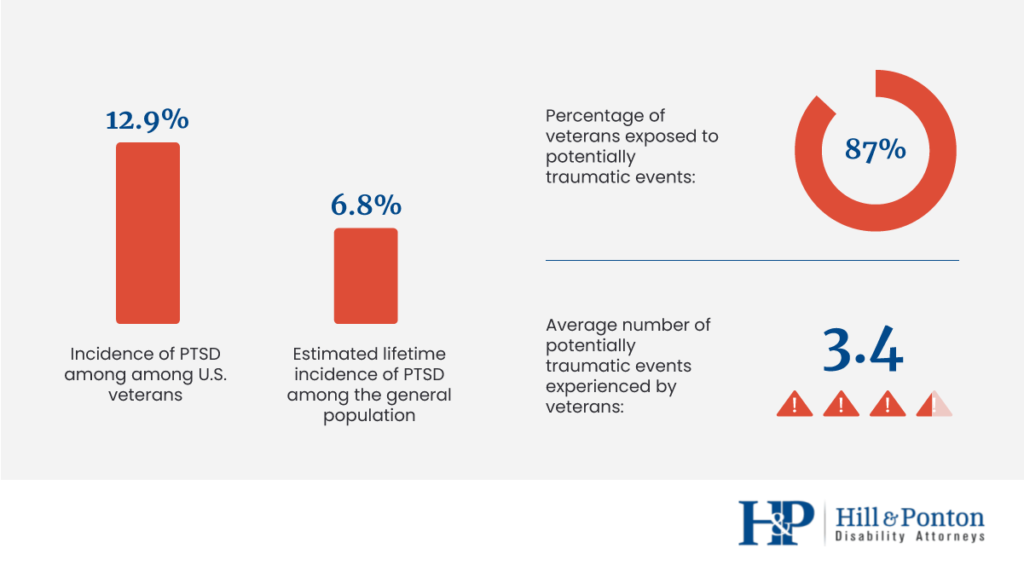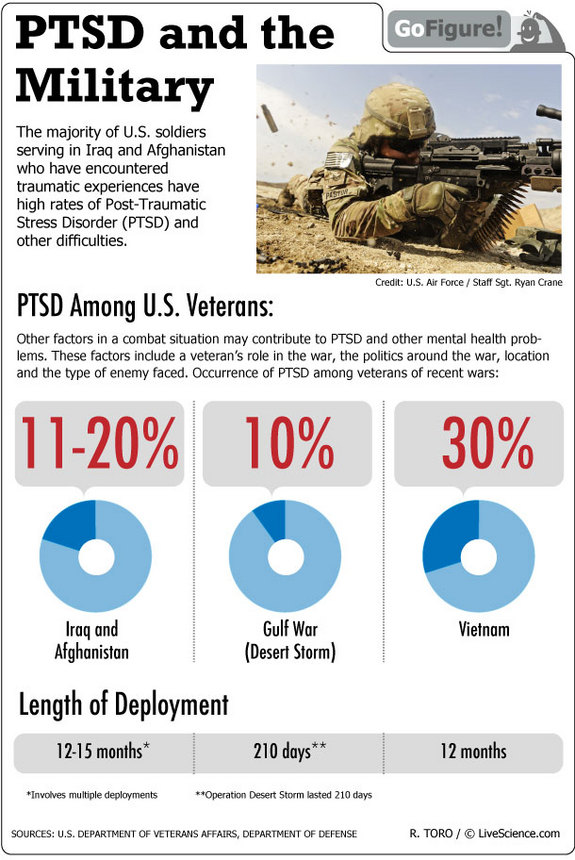Ptsd military infographic info stress health mental traumatic post pathways treatment awareness disorders
Table of Contents
Table of Contents
Post-traumatic stress disorder (PTSD) is a serious mental condition that can develop after experiencing or witnessing a traumatic event, such as combat. Veterans returning from military service often struggle with the effects of PTSD, which can have a profound impact on their lives and the lives of their loved ones. In this blog post, we will explore statistics on PTSD in the military and shed light on this important topic.
Pain Points Related to PTSD in the Military
Many military veterans struggle with PTSD, which can manifest itself in various ways, including flashbacks, nightmares, anxiety, and depression. These symptoms can make it difficult for veterans to readjust to civilian life and can lead to problems with work, relationships, and overall quality of life. Additionally, there is still a stigma surrounding mental health in the military, which can prevent veterans from seeking the help they need.
Answering the Target of PTSD in the Military
The target of statistics on PTSD in the military is to raise awareness about the prevalence and severity of PTSD in veterans and to promote better understanding and treatment of this condition. By analyzing data and studying trends, we can start to develop more effective strategies for identifying and treating PTSD in military personnel.
Main Points about Statistics on PTSD in the Military
According to a study by the National Center for PTSD, approximately 11-20% of veterans who served in Operation Iraqi Freedom and Operation Enduring Freedom experience PTSD in a given year. Additionally, an estimated 30% of Vietnam veterans have experienced PTSD at some point in their lives. PTSD is also known to increase the risk of substance abuse, marital problems, and suicide among veterans.
 These statistics highlight the urgent need for improved PTSD treatment and support for military veterans. More education and awareness are also needed to help break down the stigma surrounding mental health in the military.
These statistics highlight the urgent need for improved PTSD treatment and support for military veterans. More education and awareness are also needed to help break down the stigma surrounding mental health in the military.
Personal Experience with PTSD in the Military
When I served in the military, I witnessed firsthand the toll that combat can take on a person’s mental health. Many of my fellow soldiers struggled with PTSD after returning from deployment, which made it difficult for them to reintegrate into civilian life. Some of them turned to drugs or alcohol to cope, while others suffered in silence. It’s important that we continue to support our veterans and provide them with the resources and treatment they need to recover from PTSD and other mental health issues.
 Statistics on PTSD in the military can help us better understand the scope and impact of this condition, but it’s important not to lose sight of the human stories behind the numbers.
Statistics on PTSD in the military can help us better understand the scope and impact of this condition, but it’s important not to lose sight of the human stories behind the numbers.
Stigma Surrounding Mental Health in the Military
One of the biggest obstacles to addressing PTSD in the military is the stigma that surrounds mental health issues. Many military personnel fear that seeking help for mental health issues will be seen as a sign of weakness or that it will negatively impact their military career. This can prevent veterans from seeking the treatment they need and can lead to a worsening of symptoms over time.
 To combat this stigma, it’s important to provide education and resources about mental health and to encourage an open and supportive dialogue about these issues both within the military and in society at large.
To combat this stigma, it’s important to provide education and resources about mental health and to encourage an open and supportive dialogue about these issues both within the military and in society at large.
Treatment and Prevention of PTSD in the Military
Preventing PTSD in military personnel is ideal, but treatment is often necessary for those who experience it. Treatment can involve a combination of therapy, medication, and lifestyle changes. It’s important for veterans to seek out specialized treatment from professionals who understand the unique challenges and experiences of military personnel.
 Additionally, there are many preventative measures that can be taken to reduce the risk of PTSD, such as providing pre-deployment training and support, reducing exposure to traumatic events, and promoting healthy coping mechanisms and support networks.
Additionally, there are many preventative measures that can be taken to reduce the risk of PTSD, such as providing pre-deployment training and support, reducing exposure to traumatic events, and promoting healthy coping mechanisms and support networks.
Personal Perspective on Supporting Veterans with PTSD
As someone who has seen the impact of PTSD on military veterans, I believe it’s important to show support and empathy for those who are struggling with this condition. This can take the form of volunteering, donating to organizations that support veterans, or simply listening and offering a compassionate ear. No one should have to suffer alone, and by working together, we can help provide a brighter future for our veterans.
Questions and Answers
Q: What are common symptoms of PTSD in military veterans?
A: Common symptoms of PTSD in military veterans include flashbacks, nightmares, irritability, avoidance, and hyperarousal.
Q: How can I support a veteran with PTSD?
A: You can support a veteran with PTSD by offering a listening ear, being patient and understanding, and helping them connect with resources and support networks.
Q: What are some common misconceptions about PTSD in the military?
A: Some common misconceptions about PTSD in the military include the idea that it only affects combat veterans or that it will go away on its own over time.
Q: How effective is treatment for PTSD in military veterans?
A: Treatment for PTSD in military veterans can be very effective, particularly when specialized treatment is provided that takes into account the unique experiences of military personnel.
Conclusion of Statistics On PTSD In The Military
Statistics on PTSD in the military are an important tool for raising awareness and understanding about this important issue. By working together and providing support and resources for military veterans, we can help address the challenges of PTSD and promote better mental health for all.
Gallery
PTSD Info From Military Pathways – Boots On The Ground NY

Photo Credit by: bing.com / ptsd military infographic info stress health mental traumatic post pathways treatment awareness disorders
Veterans Respond To Sarah Palin’s PTSD Comments - ATTN:

Photo Credit by: bing.com / ptsd veterans infographic disorder stress traumatic post military mental infographics families recruiting health patient posters respond palin sarah attn virtual
PTSD And Substance Abuse: Understanding Addiction In War Veterans

Photo Credit by: bing.com / ptsd stress disorder traumatic post addiction causes military chart veterans abuse substance war health risk anxiety depression social understanding
What Percentage Of Military Have Ptsd - ClubMentalHealthTalk.com

Photo Credit by: bing.com /
13 Best PTSD Statistics Images On Pinterest | Ptsd Awareness, Post

Photo Credit by: bing.com / ptsd military veterans wounded statistics awareness veteran infographic warrior project stress traumatic post quotes disorder affects life mental health caused






